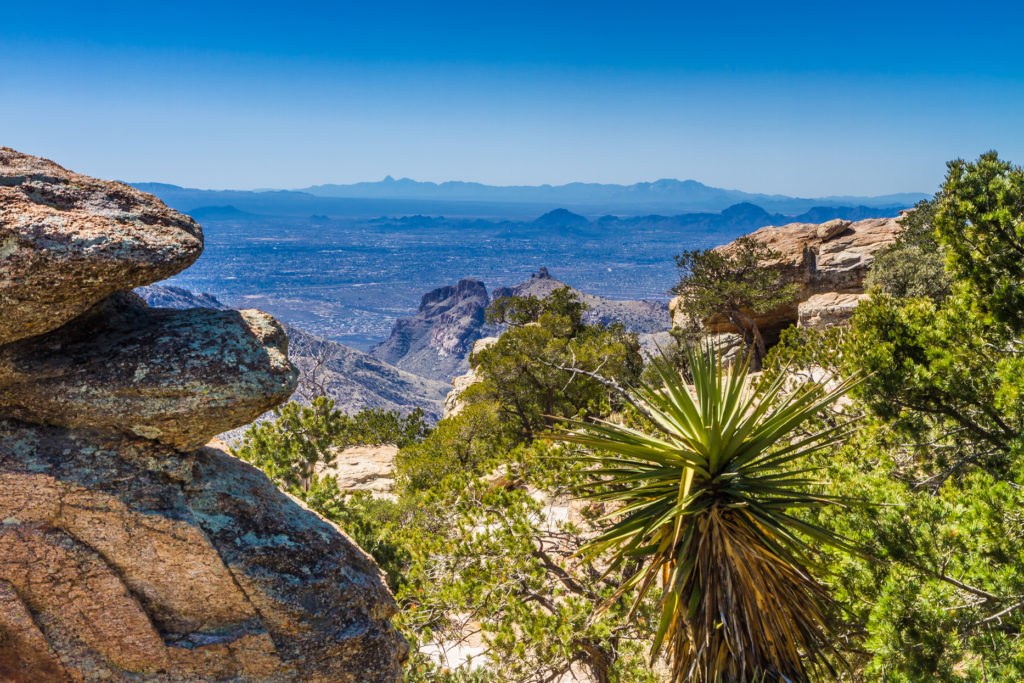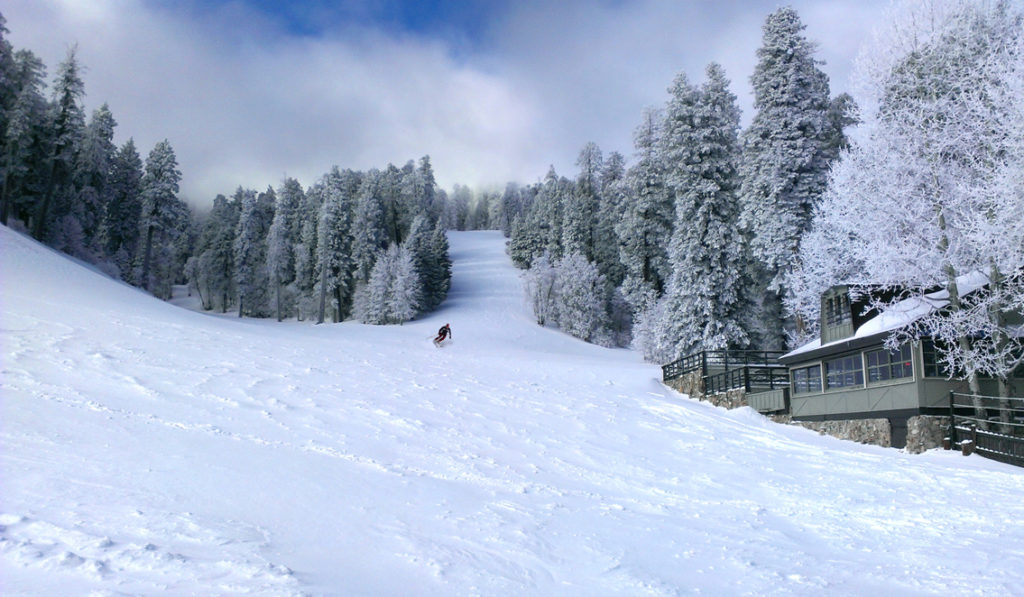
As baby boomers whose ages put us at risk for COVID-19, my wife and I have spent the past few months mostly hunkered down at home — a sad but prudent fate for this travel writer itching to confront his bucket list without literally kicking it.
While the fact that Tucson’s temperatures have topped 100 degrees most of the summer has made hibernation somewhat easier, the pandemic has made it difficult to escape that very heat — so that’s been kind of a wash.
But recently — as our contributing writer Robert Waite suggested in a post on this site back in the spring — I decided to take some “baby steps” and get out of town for a few days. Hence the Tucson branch of our family headed to a rented house atop a nearby mountain where the air is consistently 30 degrees cooler and we could actually spend time outdoors without risking heat stroke.
Tucson’s Natural Air Conditioner
Mt. Lemmon, at 9,157 feet the highest peak in the Catalina range, which effectively serves as Tucson’s northern boundary, offers an all-weather getaway for the entire Tucson region.
In summer — the season’s 90-to-100-degree-plus temperatures typically extend from May through September here — the mountain is by far the closest and most pleasant place to escape the heat.
In winter (December to March), periodic snowfalls provide a chance for Tucsonans to hit the slopes at the Mt. Lemmon Ski Valley facility, whose roots date back a century. The ski resort was partially the brainchild of legendary journalist Lowell Thomas, who helped found Tucson’s tongue-in-cheek Sahuaro Ski Club, whose logo depicted a skier entangled with a cactus.
With a driving time of about an hour and a half (depending on road conditions) to reach the top from the city, you could theoretically play tennis or golf in the morning and ski the same afternoon.
Pine Forest, Not Cacti
Driving the Catalina Highway, which twists and turns to the top of Mt. Lemmon, is an adventure in itself.
A number of pullouts allow for viewing the often striking scenery, and a variety of trailheads and campgrounds dot the route.
One campground is situated at the site of a World War II-era internment camp where Japanese-American citizens were confined — a shameful episode in American history, made more poignant by the fact that those interned were forced to help build the very highway that passes the camp.
At the 4,000-foot mark (Tucson itself is at 2,500 feet elevation), the previously abundant Saguaro cacti abruptly disappear and distinctive “stacked” rock formations known as hoodoos dominate the landscape.
Higher still, pine forests begin to appear, reminding us of Northern California locations such as Lake Tahoe and sparsely populated Alpine County — a far cry from the desert valley below.
The Town of Summerhaven
Near the top of the mountain and shortly before reaching Ski Valley, the alpine resort town of Summerhaven marks the end of the Catalina Highway and adds a touch of civilization.
Summerhaven’s population — mostly summer residents, as the name suggests — is said to be 2,300, but will likely climb higher with a new census count. Houses stretch well up onto the hillsides, lining winding roads, and — based on the amount of new construction we witnessed — lots of Tucsonans are seeking this type of nearby escape.
The house we stayed in for three nights is new as of this year, and is strictly used as an Airbnb rental. It was perfect for our family — spacious, spotlessly clean, and with cutting-edge features throughout.
Most important, there were sufficient bedrooms and baths to accommodate three generations: my wife, Catharine, and me; our son, Grael, and his wife, Nona; and our two grandsons, Conrad and Felix.
Though there’s an inviting restaurant in town, we brought all our own food and cooked and grilled, while enjoying drinks on the deck and Scrabble games that I ignominiously lost. We also took long walks that amounted to serious aerobic exercise at times.
Unfortunately, due to serious fires in the area shortly before our arrival, all the trails were closed that week, so we were limited to the roads — but that enabled us to check out all the houses that we had never before seen from the main road through town.
No, it wasn’t the Greek Isles or the South Seas — but it felt like a real vacation, at last.

Reader Comments:
A perfect Tucson summer getaway for three generations of Nortons. Thanks, Clark, we must come down your way to check it out. Given our poor air quality in Western Washington, now would be a good time. Sadly, COVID-19 has cancelled our planned travel for El Tour de Tucson for this November. — Ken Gass
kbgass@gmail.com












3 Responses to At Last, a Short Getaway